
Many of you who follow our blog must know how much we enjoy Japanese cuisine. Not only we love to eat them we learn to make it. After rounds of practice, we decide to share with you our thoughts of making Chawanmushi. We have prepared this guide for you – you can master this silky smooth Chawanmushi (savoury soft egg custard) with flavourful and delicately flavoured. this sophisticated dish can be cooked in 30 minutes.
Chawanmushi (Savory Egg Custard/茶碗蒸し) is a delicate and savoury Japanese appetizer that we are familiar with and this is one of our favourite Japanese dishes that always warmth our stomach.
There are many interesting variations and seasonal ingredients such as shrimp, fish, or veggies are often included. Because it’s highly customizable, this savoury egg custard can be homey or fancy depending what goes into it. To get you started, we’ll be sharing a basic Chawanmushi recipe with chicken today.
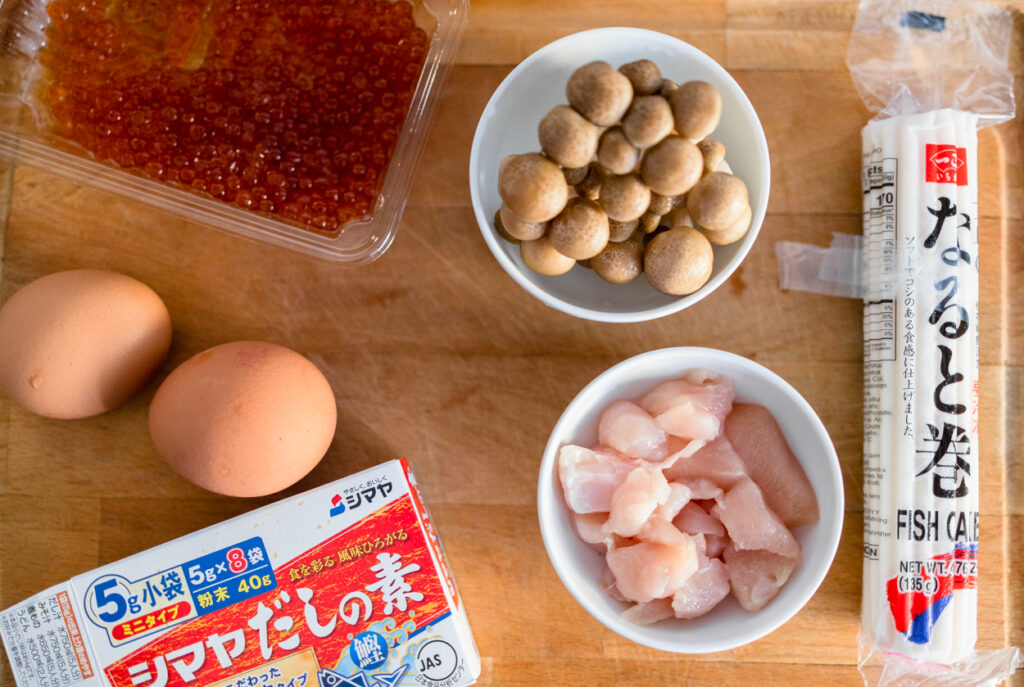
Importance of good dashi
A good stock is the foundation of an excellent chawanmushi. Dashi stock is the common stock for the authentic chawanmushi. However, you can use chicken stock/ powder dashi that we use for this recipe as the alternative as chawanmushi is a very flexible recipe.
However to prepare umami dashi all you need are only three ingredients required to prepare this Japanese stock- kombu (dry kelp/ 昆布), katsuobushi (dried bonito flake/柴魚片) with some water. The combination of kombu and katsuobushi is always more significant than the stand-alone individual. You will immediately notice the aroma and flavour that you are familiar with at the Japanese restaurants.
However this pack of bonito dashi that we got from mediya also contain all the flavours we needed, most importantly we can have it instantly.
Ratio of stock into egg
The egg to stock ratio is critical because it will determine the firmness of the custard. The custard will break if there is too much stock and no longer smooth and silky if it is too little. As long as you remember the 3:1 ratio of soup stock to egg, you can make chawanmushi from any combination of ingredients.
Then the mixture should be strained through a fine-mesh sieve, such as a tea strainer. This removes any remaining clumps of egg white and chalaza that can affect the texture of the steamed egg.
Once your custard is done, you can add your mix-ins to some heat-safe cups and divide the egg mixture evenly between them. Be sure to pour it into the cups slowly to avoid introducing new air bubbles. These get covered with lids, or if you don’t have any, you can use aluminium foil.
Common ingredients used in chawanmushi
The filling can be as simple as diced chicken meat and kamaboko (steamed fish cakes), or as luxurious as dried scallops, shrimps, ginkgo nuts, and shiitake mushrooms.
Mushroom
It’s important to have mushroom, in the Chawanmushi for us, usually, shitake mushroom is been used but this time we got the white mushroom as you don’t have to soak it overnight like the shitake mushroom.
Chicken
There’s always a protein in the chawanmushi, it can be prawn, scollop or ever oyster but this time we used chicken breast as there is too many seafoods on our table (we are having a sashimi dinner).
Carrots/ Edemame
Ginkgo
Ginkgo seeds (we didn’t have it this round) are commonly added into the custard in Japan. Remove the shell by knocking it with the back of the knife. Cut the ginkgo seed into two, and remove seed coat by rubbing it lightly as well as the embryo with a toothpick.
How to steam it?
The duration and temperature of steaming as indicated in the recipe is only a guideline, as actual timing and heat depending on the size of the bowl and the stove that you use. Steam over low heat to ensure not to overcook the custard. Rapid boiling water will cause the custard puff up during steaming and collapse during cooling, leaving unsightly holes like a crater. Do not open the lid during steaming to avoid a sudden drop in temperature that may cause the custard to deflate and collapse.
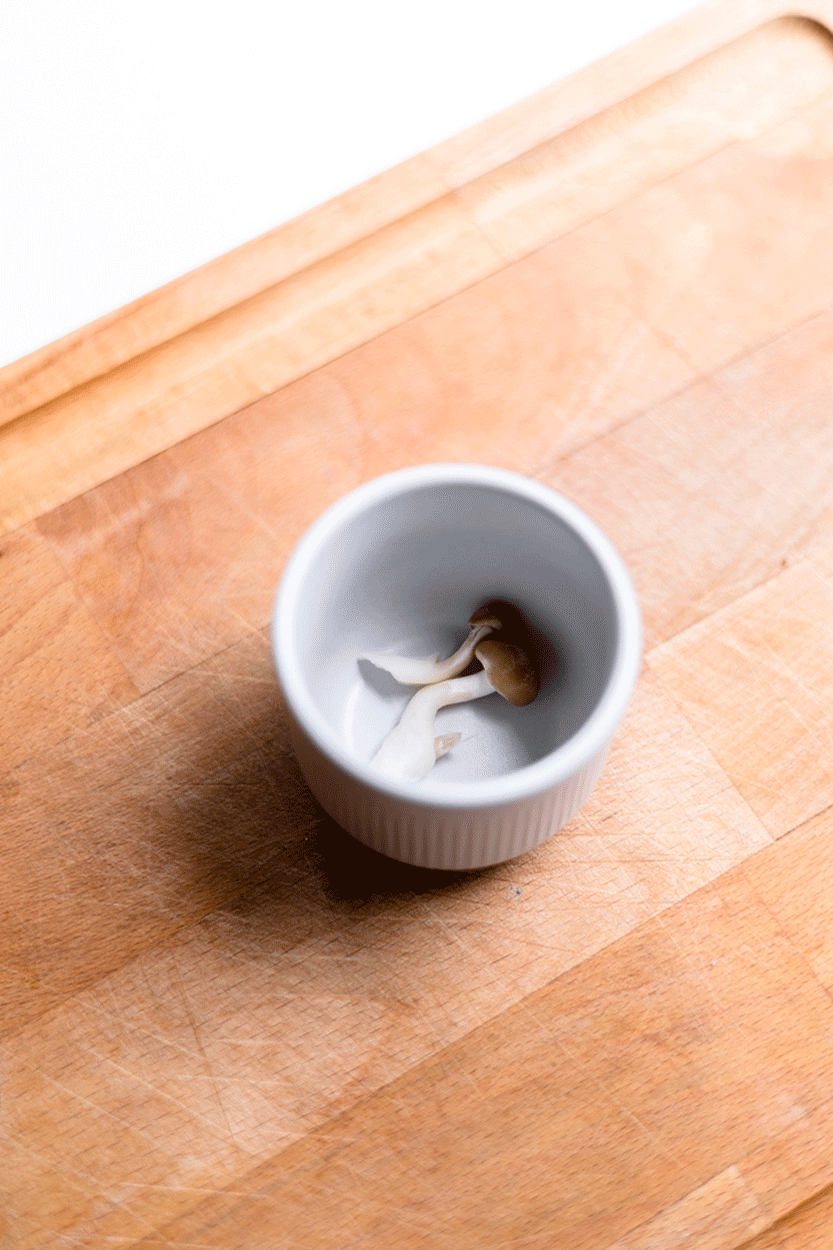

Luxury of sea flavours
When the chawanmushi is done, they can be served hot or cold. I like to garnish them with additional toppings before serving, but this is totally optional. Chawanmushi might look simple but it’s required your patience as you may undercook or overcook it.
During a special occasion, we always like to eat chawanmushi with Uni (sea urchin) and Ikura (salmon roe) on top. Chawanmushi is topped with Salmon roe before serving, providing a salty pop and a nice textural contrast.
This delicate dish can be served hot, warm, or cold in a small lidded cup, and since it can’t be eaten with chopsticks, it’s one of few Japanese dishes that are traditionally consumed with a spoon. Ikura chawanmushi is traditionally served as an appetizer (but we eat it like a snack as it is so additive during the cold weather!)
xoxo, Angela
Perfectly Silky Chawanmushi
Delicate and savoury, Chawanmushi is a classic Japanese steamed egg custard served in a cup. Learn how to make this appetizer for a true Japanese home cooking experience. Your guests will be impressed!
Ingredients
3 large eggs
1/2 tsp soy sauce
1 tsp mirin
375 ml Dashi stock
1 shiitake mushrooms
2 pieces of Fish cake
1 chicken breast, sliced in cube
Methods
- Start by preparing the filling: Cut off stem of shiitake mushrooms and cut it into thin slices. Slice fish cakes thinly and set aside. Cut the chicken breast into small chuck cube.
- Prepare the egg mixture: In a large bowl egg, soy sauce and mirin together with chopsticks and try not to whisk too much to avoid aerating egg. Pour Dashi stock into the ball small amount at a time and mix with egg gradually. Use a strainer, strain the egg mixture in order to achieve silky soft texture when it is steamed.
- Divide the mixture and filling into 3 teacups(or mugs or ramekins). Steam the chawanmushi in a steamer of boiled water, place teacups in the pot and turn down to low heat. Put the lid on and steam about 7 – 10 minutes.
- Garnish with salmon roe (optional) and serve.

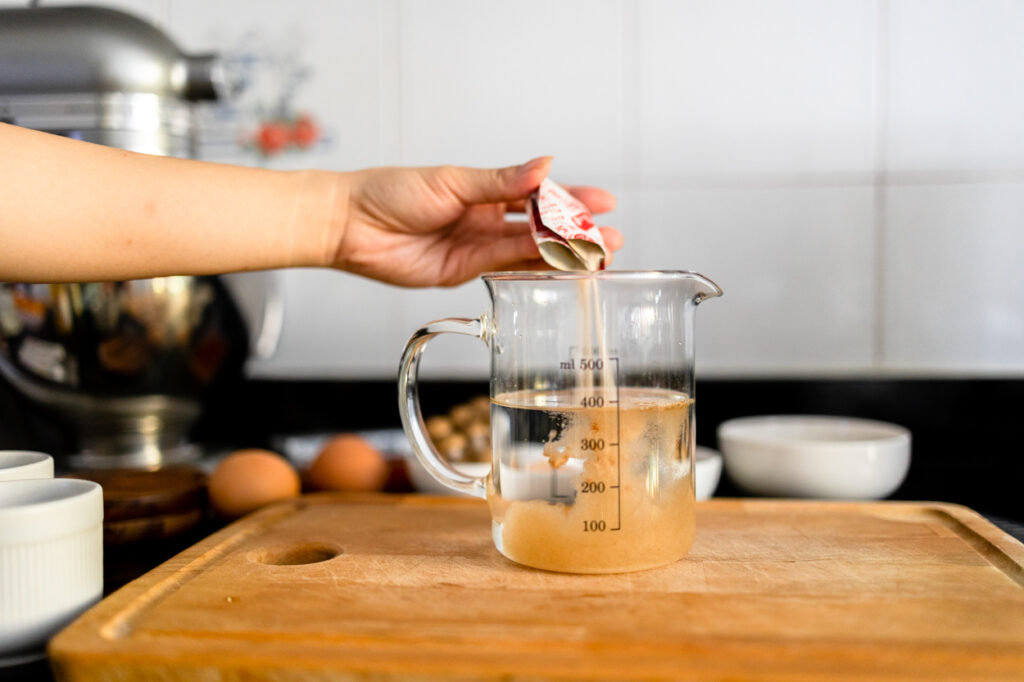
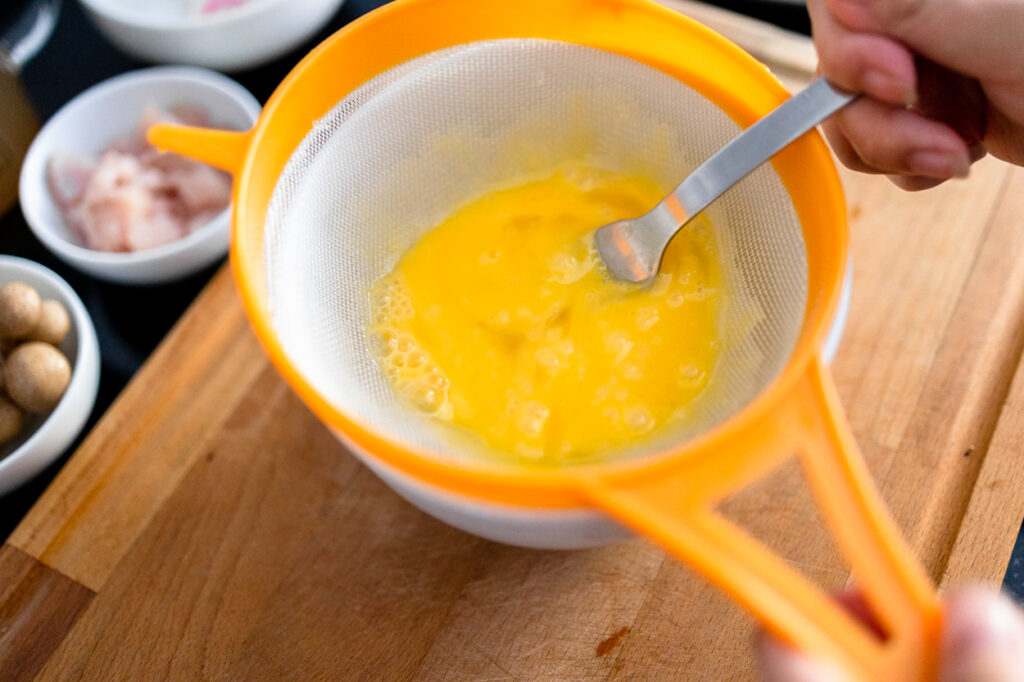

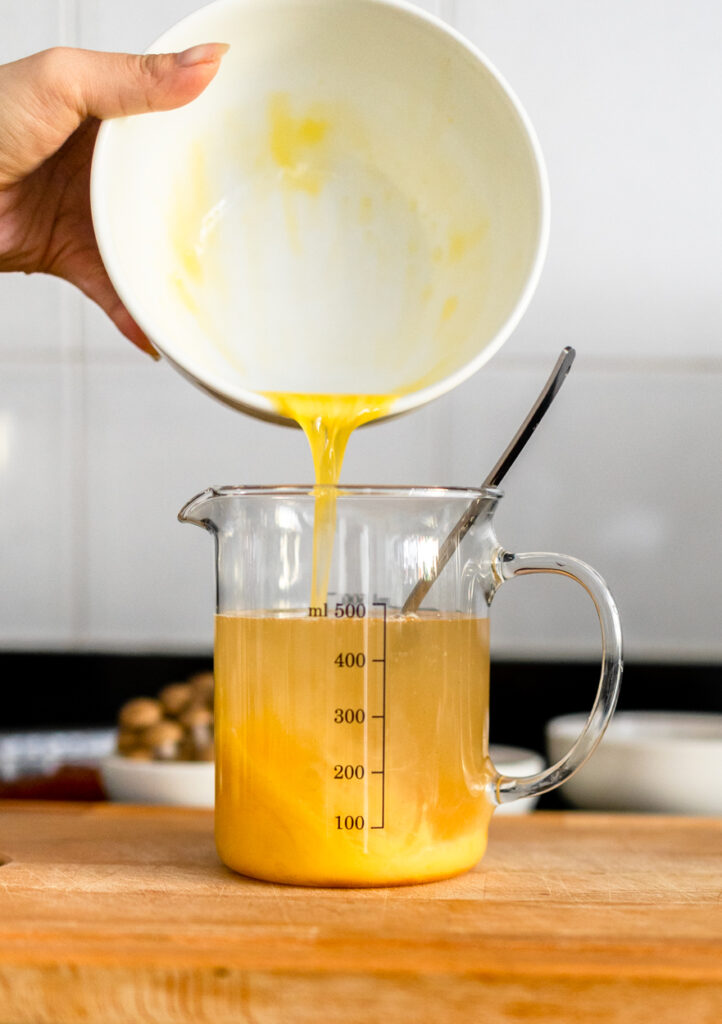
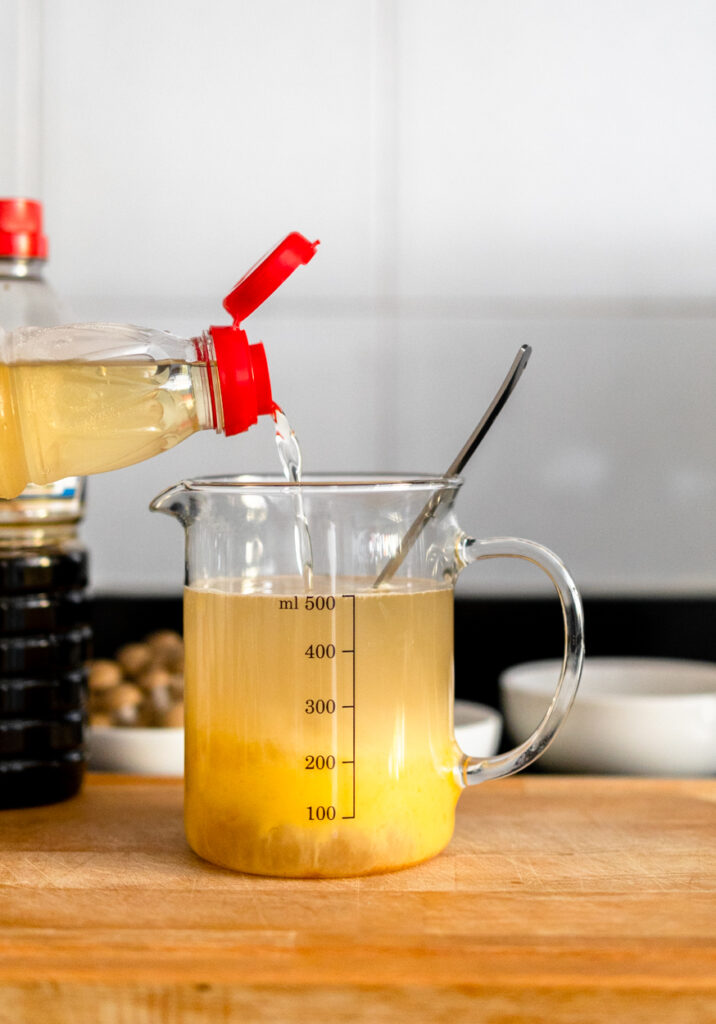
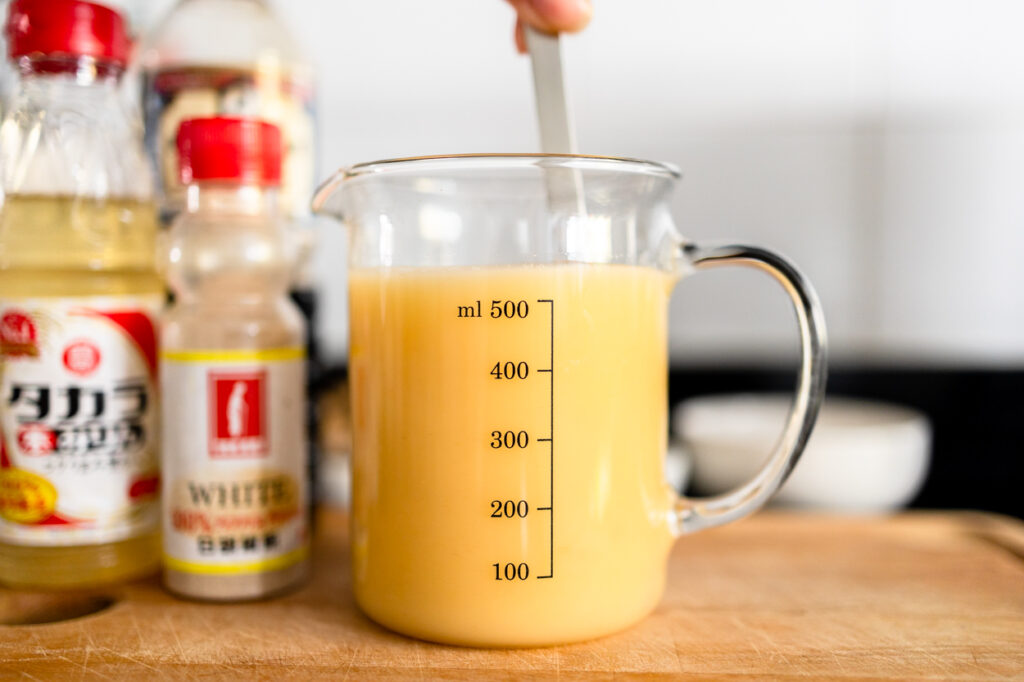

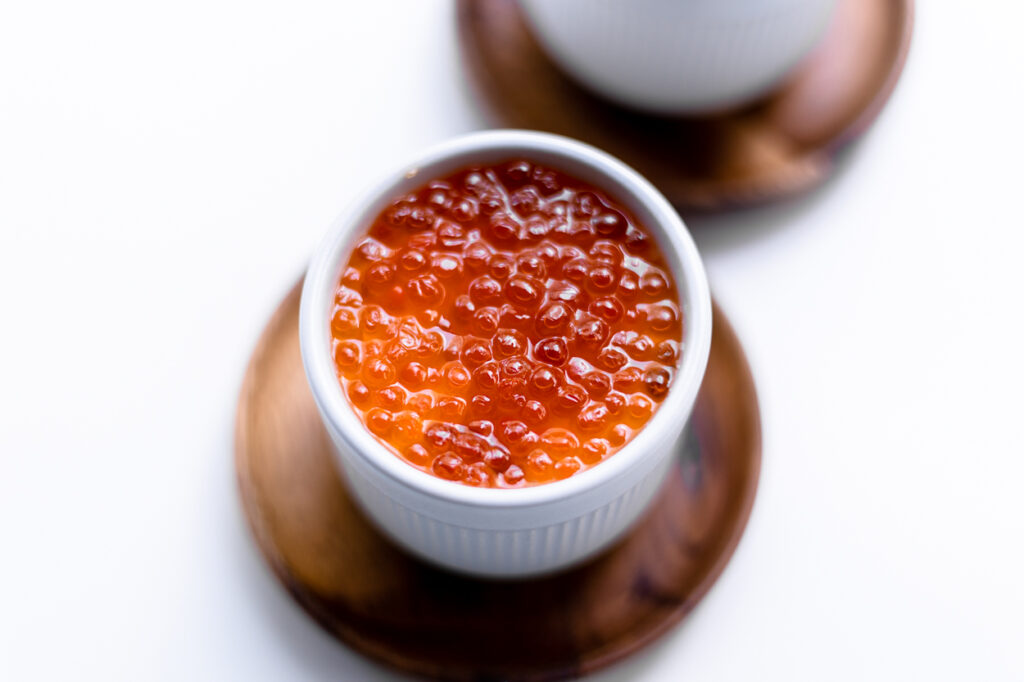
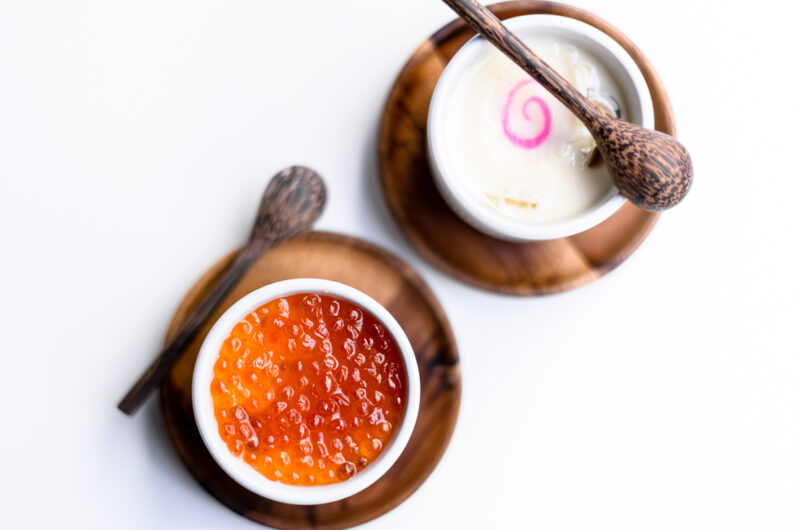


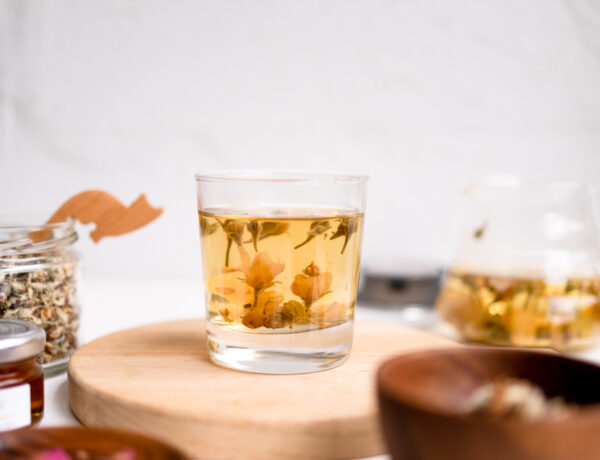

No Comments